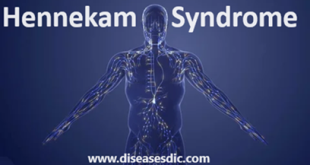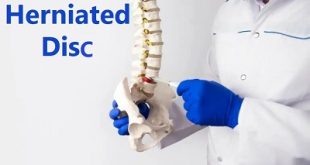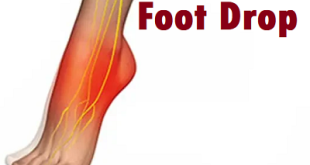Definition
Horner syndrome is a condition impacting the eye and adjacent facial tissues on one side, arising due to the paralysis of specific nerves. This syndrome can manifest at any stage of life; approximately 5 percent of those affected have it since birth (congenital).
Horner syndrome is marked by the drooping of the upper eyelid (ptosis) on the impacted side, a narrowed pupil in the affected eye (miosis) causing uneven pupil sizes (anisocoria), and the absence of sweat production (anhidrosis) on the affected facial side. This condition often leads to the sunken appearance of the eye in its socket (enophthalmos) and a reddened eye. In cases where Horner syndrome emerges prior to the age of 2, there might be a difference in the color of the iris (iris heterochromia), with the iris of the affected eye having a lighter hue compared to the unaffected eye. Those who develop Horner syndrome after the age of 2 usually do not display iris heterochromia.
The irregularities in the eye region associated with Horner syndrome typically do not impact vision or well-being. Nevertheless, the nerve impairment leading to Horner syndrome might stem from other medical issues, some of which could pose life-threatening risks.
History
The syndrome’s appellation originates from Johann Friedrich Horner, a Swiss ophthalmologist who initially elucidated the syndrome in 1869. While several individuals had documented cases before, the term “Horner’s syndrome” has become the most widely recognized. In certain regions like France and Italy, Claude Bernard is also associated with the condition, known as Claude Bernard–Horner syndrome (abbreviated as CBH). Additionally, in France, Francois Pourfour du Petit is acknowledged for delineating this syndrome.
Types of Horner syndrome
Horner’s syndrome, also known as Horner syndrome or oculosympathetic paresis, is a rare condition that affects the sympathetic nerve pathway to the eye. It results in a characteristic set of symptoms on one side of the face and eye. There are two main types of Horner’s syndrome: congenital and acquired.
Congenital Horner’s Syndrome
This type of Horner’s syndrome is present at birth and is usually caused by a developmental issue or injury during the birthing process. Congenital Horner’s syndrome typically involves a disruption of the sympathetic nerve pathway from the brain to the eye. It may be associated with conditions such as aortic coarctation (a narrowing of the aorta), neuroblastoma (a type of tumor that affects nerve tissue), or birth trauma.
Acquired Horner’s Syndrome
This type of Horner’s syndrome develops later in life due to a disruption of the sympathetic nerve pathway after it has fully developed. Acquired Horner’s syndrome can result from various causes, including:
- Preganglionic Lesions: These are disruptions that occur before the sympathetic nerve fibers reach the superior cervical ganglion (a collection of nerve cell bodies). Preganglionic lesions can be caused by conditions like Pancoast tumors (lung tumors that affect the sympathetic nerves), carotid artery dissection (a tear in the carotid artery), or trauma.
- Postganglionic Lesions: These occur when the sympathetic nerve pathway is disrupted after leaving the superior cervical ganglion. Postganglionic lesions can be caused by conditions such as injury, surgery, inflammation, or compression of the sympathetic nerve pathway.
- Central Lesions: These are disruptions that occur in the brainstem or higher centers that control the sympathetic nerve pathway. Central lesions can result from conditions like stroke, multiple sclerosis, or brainstem tumors.
Pathophysiology of Horner Syndrome
Horner syndrome emerges as a result of disruptions to the sympathetic system. The specific symptoms exhibited are contingent upon the lesion’s location, while the extent of denervation directly influences the severity of the condition. The upper eyelid’s elevation is aided by the superior tarsal muscle, which is governed by sympathetic nerve input. When this muscle is deprived of nerve signals, it leads to a milder form of drooping called ptosis, contrasting with the more pronounced ptosis resulting from oculomotor (CN III) palsy that controls the levator palpebrae superioris. Notably, the superior tarsal muscle sustains the lifted position of the upper eyelid following its elevation by the levator palpebrae superioris. This phenomenon elucidates the partial ptosis observed in cases of Horner syndrome. Additionally, due to the similar mechanism, the lower eyelid may experience a slight elevation due to the denervation of the lower lid muscle, akin to the superior tarsal muscle.
The dilation of the pupil (mydriasis) is regulated by the sympathetic nervous supply. In cases of disruption, the parasympathetic supply becomes unchecked, leading to pupil constriction (miosis). Importantly, the response of the pupils to light and their adjustment for focusing (accommodation) remains unaffected, as these functions are independent of the sympathetic nerve supply.
The occurrence of ipsilateral anhidrosis, another well-known manifestation, varies according to the extent of disruption to the sympathetic supply. In instances of anhidrosis stemming from first-order neuron lesions, the loss of sweating affects the same side of the body as the disrupted central origin of sympathetic supply. In cases where second-order neurons are affected, the anhidrosis encompasses the ipsilateral face. Following lesions to the postganglionic third-order neurons after the branching of vasomotor and sudomotor fibers, the impact is considerably restricted and primarily involves the facial area adjacent to the ipsilateral brow. Iris heterochromia, characterized by a notable lack of pigment in the iris on the impacted side, is evident in children below 2 years of age and represents the congenital manifestation of Horner syndrome.
Oculosympathetic pathway involved in Horner’s syndrome
Classification of Horner’s syndrome
Horner’s can be classified according to the site of the lesion alongside the sympathetic chain. The sympathetic chain involved in Horner’s consists of three consecutive neurons, which transmit signals from the hypothalamus to the eye.
The first and second-order neurons are the preganglionic neurons, and the third-order is the postganglionic neuron.
A useful way to differentiate the location of the lesion is to assess the sites affected by anhidrosis:
- Anhidrosis of face, arm and trunk: central/first order
- Anhidrosis of face: second-order
- No anhidrosis: third-order
First-order (central Horner’s)
The first order neuron spans from the hypothalamus to the T1 spinal cord segment. Lesions arising between these positions are known to cause ‘central’ Horner’s syndrome and result from a variety of pathologies such as multiple sclerosis and brain tumours. Stroke can also cause central Horner’s and can present alongside other cranial nerve palsies. The most common stroke syndrome is Wallenberg’s (lateral medullary) syndrome affecting the posterior inferior cerebellar artery. This commonly presents as Horner’s with ipsilateral ataxia, dysphagia, hoarseness and reduced gag reflex.
Second-order
The second-order neuron leaves the spinal cord and travels towards the head via the cervical sympathetic chain. It terminates at the superior cervical ganglion where it synapses with the postganglionic neuron. Shortly after exiting the spinal cord, the neuron is in close proximation to the upper lobe of the lung and subclavian artery. Therefore, causes of second-order Horner’s include Pancoast tumours (apical lung cancer), thyroid malignancies, iatrogenic and traumatic causes.
Third-order (postganglionic)
The third-order (postganglionic) neuron arises from the superior cervical ganglion and travels alongside the internal carotid artery to the cavernous sinus, where the sympathetic fibres join the ophthalmic nerve (V1). Some of these fibres innervate the dilator muscles of the iris as well as the Muller’s muscle in the eyelid. Causes of postganglionic lesions include carotid artery dissection, cavernous sinus thrombosis and rarely cluster headaches.
Congenital
Very rarely, Horner’s can be present at birth, commonly from unknown causes or secondary to birth trauma. The classic finding is iris heterochromia or different coloured irises.
Symptoms of Horner Syndrome
These symptoms affect your eyes or face on the same side:
- No sweat on one side of your face
- A droopy upper eyelid (ptosis)
- A lower eyelid that’s slightly raised (inverse ptosis)
- A small pupil, the black circle in the middle of your eye (miosis)
- Pupils that are different sizes (anisocoria)
- A pupil that doesn’t open (dilate) widely or is slow to open in dim light
- A sunken or bloodshot eye
You also can have pain or headaches, which happens more often in middle-aged men.
Horner syndrome can be a sign of a serious health risk such as nerve damage. See your doctor if you notice any of its symptoms.
Symptoms of Horner syndrome in children
Children who get Horner syndrome before age 2 also can have:
- One iris, the colored circle around the pupil, that’s a lighter color than the other (heterochromia iridis)
- A lack of flushing on one side of their face on hot days or after playing
Causes of Horner Syndrome
Horner syndrome can be caused by any interruption in a set of nerve fibers that start in the part of the brain called the hypothalamus and travel to the face and eyes. These nerve fibers are involved with sweating, the pupils in your eyes, and the upper and lower eyelid muscles.
Damage of the nerve fibers can result from:
- Injury to the carotid artery, one of the main arteries to the brain
- Injury to nerves at the base of the neck called the brachial plexus
- Migraine or cluster headaches
- Stroke, tumor, or other damage to a part of the brain called the brainstem
- Tumor or infection in the top of the lung, between the lungs, and neck
- Injections or surgery done to interrupt the nerve fibers and relieve pain (sympathectomy)
- Spinal cord injury
In rare cases, Horner syndrome is present at birth. The condition may occur with a lack of color (pigmentation) of the iris (colored part of the eye).
What are the risk factors of Horner Syndrome?
The risk factors associated with Horner’s syndrome reflect the condition’s many possible causes.
Risk factors for Horner’s syndrome may include:
- Family history
- Health history: Horner’s syndrome may be more common in individuals with a history of the following
- Apical lung cancer
- Certain infections
- Disorders of the neck, chest, or lungs
- Interruption of blood flow to the brain caused by a stroke, aneurysm, or embolism
- Malignant or benign lesion or tumor on the cervical nerves on one side of the body
- Migraines or cluster headaches
- Surgery
- Thyroid tumor
- Trauma to the neck or head
Complications and Related Conditions
Certain severe symptoms of Horner’s syndrome require prompt attention. Should these symptoms manifest, it is crucial to promptly reach out to your healthcare provider. These critical complications encompass:
- Dizziness
- Problems seeing
- Neck pain or a headache that is sudden and severe
- Weak muscles or inability to control your muscle movements
Other conditions can have symptoms that are similar to Horner’s syndrome. These conditions are Adie syndrome and Wallenberg syndrome.
Adie syndrome
This is a rare neurological disorder that also affects the eye. Usually, the pupil is larger in the affected eye. However, in some cases, it may appear smaller and look like Horner’s syndrome. Further testing will allow your doctor to confirm this as your diagnosis.
Wallenberg syndrome
This is also a rare disorder. It’s caused by a blood clot. Some of the symptoms will mimic Horner’s syndrome. However, further testing will find other symptoms and causes leading your doctor to this diagnosis.
How to diagnosis Horner syndrome?
Healthcare providers usually diagnose Horner syndrome with a physical exam. Determining the underlying cause may be complex, as it can occur due to many medical conditions. In addition, other conditions can cause similar symptoms.
A healthcare provider will ask detailed questions about your symptoms and medical history. They’ll ask about past injuries, illnesses and surgeries. They’ll also perform a physical exam.
Based on your medical history and any other symptoms you have, a provider may order additional tests to determine the cause of Horner syndrome, including:
- Imaging tests, such as a chest X-ray, magnetic resonance imaging (MRI), computed tomography (CT scan) or ultrasound.
- Blood tests, such as complete blood count (CBC) and erythrocyte sedimentation rate (ESR).
Treatment
Treatment of Horner syndrome depends on the cause. Signs and symptoms usually go away after the cause is treated. You may need any of the following:
- An ophthalmologist (eye specialist) may be able to find and treat vision problems that develop.
- Occupational therapy may be helpful if you have trouble seeing because of eyelid drooping. An occupational therapist can help you strengthen affected eye muscles. The therapist can also help you find ways to do your work or daily activities more easily if you are having vision problems.
- Surgery or medication may be used if you have severe eyelid drooping.
- Rehabilitation and Support: If nerve damage is present, rehabilitation techniques such as physical therapy or occupational therapy might be recommended to help improve eye coordination and overall function.
Prevention
Horner syndrome is usually caused by an underlying health issue like a tumor, injury, or nerve damage, which can’t always be prevented. However, you can take steps to stay healthy and reduce your risk of conditions that might lead to Horner syndrome:
- Regular Check-ups: Visit your doctor for routine check-ups to catch any potential health problems early.
- Safety: To prevent injuries, use seat belts, helmets, and safety gear when necessary, and avoid risky activities.
- Eye Care: Protect your eyes from injury by wearing safety glasses when needed, especially in situations where eye injury is more likely.
- Healthy Lifestyle: Maintain a healthy lifestyle with a balanced diet, regular exercise, and managing conditions like high blood pressure and diabetes.
- Avoid Smoking: Smoking can damage blood vessels and nerves, so quitting or avoiding smoking can help reduce your risk.
- Prompt Medical Attention: If you experience sudden changes in vision, eye discomfort, or unusual symptoms, seek medical help promptly.
Remember that while you can take steps to reduce your risk of certain conditions, there’s no guaranteed way to prevent Horner syndrome entirely since it’s often linked to specific underlying causes. Regular medical check-ups and a healthy lifestyle can contribute to overall well-being and potentially lower your risk of developing conditions that might lead to Horner syndrome.
 Diseases Treatments Dictionary This is complete solution to read all diseases treatments Which covers Prevention, Causes, Symptoms, Medical Terms, Drugs, Prescription, Natural Remedies with cures and Treatments. Most of the common diseases were listed in names, split with categories.
Diseases Treatments Dictionary This is complete solution to read all diseases treatments Which covers Prevention, Causes, Symptoms, Medical Terms, Drugs, Prescription, Natural Remedies with cures and Treatments. Most of the common diseases were listed in names, split with categories.







